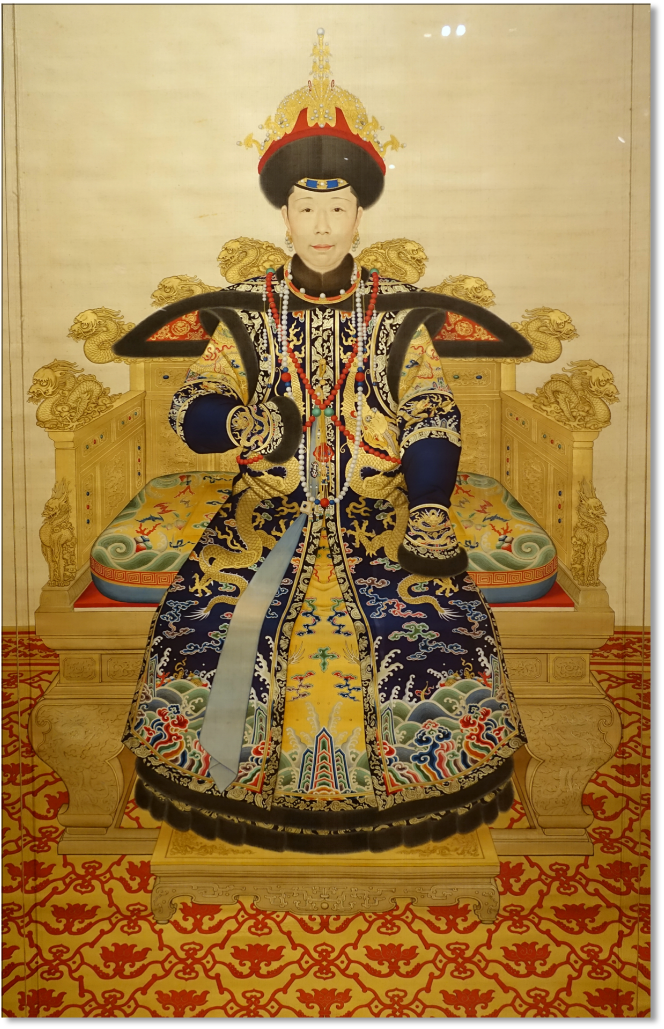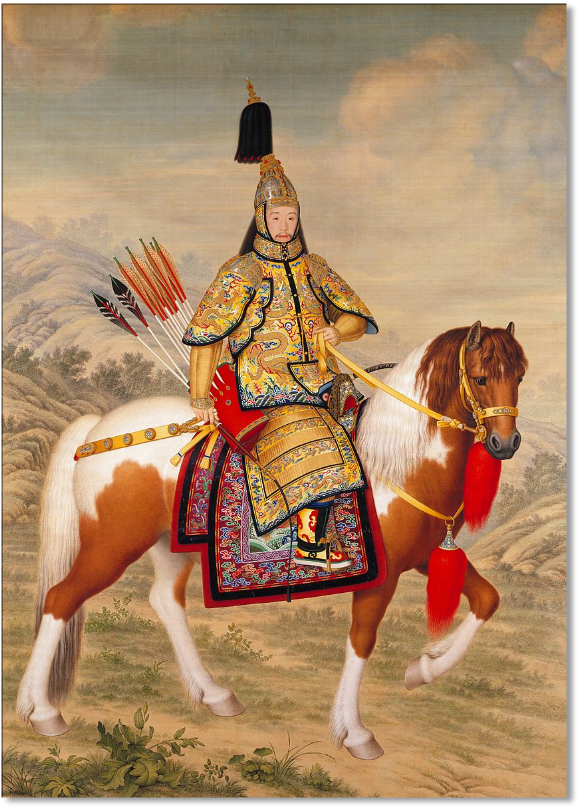
Eastern Tours
The eastern tours (dongxun
東廵) were part of a broader Qing tradition of imperial inspection touring that took Qing emperors in the
four cardinal directions (West to Mount Wutai, East to Manchuria and also to Mount Tai [the birthplace of
Confucius], North to the Summer capital at Rehe, and South to the Jiangnan area, the cultural heartland of
China proper). The Qianlong Emperor (reign 1735-1799) was a notoriously peripatetic emperor who could not
stay in one place for very long. Over the 60 years of his reign, he undertook six tours of the Jiangnan
area, five visits to the temple of Confucius in Qufu (Shandong), five pilgrimages to the Buddhist site of
Wutai Shan, four excursions to Songshan and Kaifeng in Henan, and four eastern tours. Undergoing a total
of twenty three extended tours across the Qing realm in addition to lengthy stays at the summer capital,
it is estimated that Qianlong was away from Beijing a good third of the time, if not more (Symons 2004,
55).
For Qianlong, at the age of 67, the 1778 eastern tour was his third visit to Mukden, a trip he would repeat five years later. This tour was especially meaningful for Qianlong as it took place in the year following the death of his beloved mother, the Empress Dowager Lady Niohuru (1692-1777)—her given name was lost to history. Qianlong’s love and devotion for his mother had become legendary. Until she became too old to travel, she had accompanied her son on many of his tours, some arranged on the occasions of her birthday, such as the extensive sightseeing tours of southern China on her sixtieth and seventieth birthdays (Elliott 2009, 36-38). Touring was thus an integral part of Qianlong’s bond with his mother, which contributed to his decision to undertake this eastern tour after the hundred-days mourning period of her death.
These tours were no small enterprise, involving monumental logistics. Preparations for imperial touring could take up to two years. Infrastructure along the route, such as the building and repair of roads and bridges, needed to be sufficiently wide to accommodate imperial carriages.
For Qianlong, at the age of 67, the 1778 eastern tour was his third visit to Mukden, a trip he would repeat five years later. This tour was especially meaningful for Qianlong as it took place in the year following the death of his beloved mother, the Empress Dowager Lady Niohuru (1692-1777)—her given name was lost to history. Qianlong’s love and devotion for his mother had become legendary. Until she became too old to travel, she had accompanied her son on many of his tours, some arranged on the occasions of her birthday, such as the extensive sightseeing tours of southern China on her sixtieth and seventieth birthdays (Elliott 2009, 36-38). Touring was thus an integral part of Qianlong’s bond with his mother, which contributed to his decision to undertake this eastern tour after the hundred-days mourning period of her death.
These tours were no small enterprise, involving monumental logistics. Preparations for imperial touring could take up to two years. Infrastructure along the route, such as the building and repair of roads and bridges, needed to be sufficiently wide to accommodate imperial carriages.
 Empress Xiaoxian, Ignatius Sichelbarth (Ai Qimeng) and Yi Lantai and possibly Wang Ruxue, 1777, hanging scroll, ink and
color on silk. Peabody Essex Museum. Gift of Mrs. Elizabeth Sturgis Hinds, 1956. Photo by Walter
Silver/PEM.
Empress Xiaoxian, Ignatius Sichelbarth (Ai Qimeng) and Yi Lantai and possibly Wang Ruxue, 1777, hanging scroll, ink and
color on silk. Peabody Essex Museum. Gift of Mrs. Elizabeth Sturgis Hinds, 1956. Photo by Walter
Silver/PEM.Source Link
 The Qianlong Emperor in Ceremonial Armour on Horseback,
Giuseppe Castiglione, 1758, hanging scroll, ink and color on silk, 322.5 x 232 cm, The Palace Museum, Gu8761.
The Qianlong Emperor in Ceremonial Armour on Horseback,
Giuseppe Castiglione, 1758, hanging scroll, ink and color on silk, 322.5 x 232 cm, The Palace Museum, Gu8761.Source Link